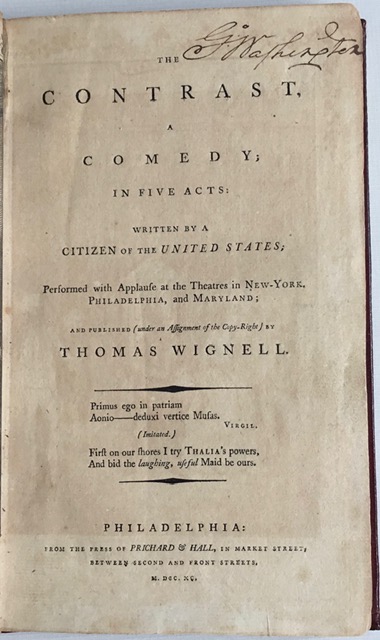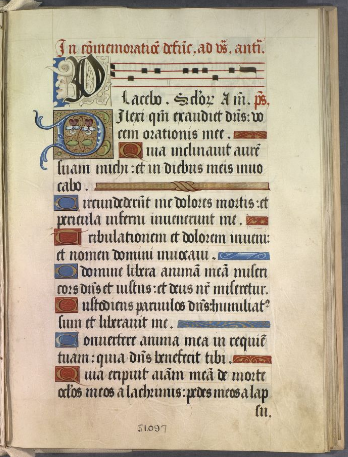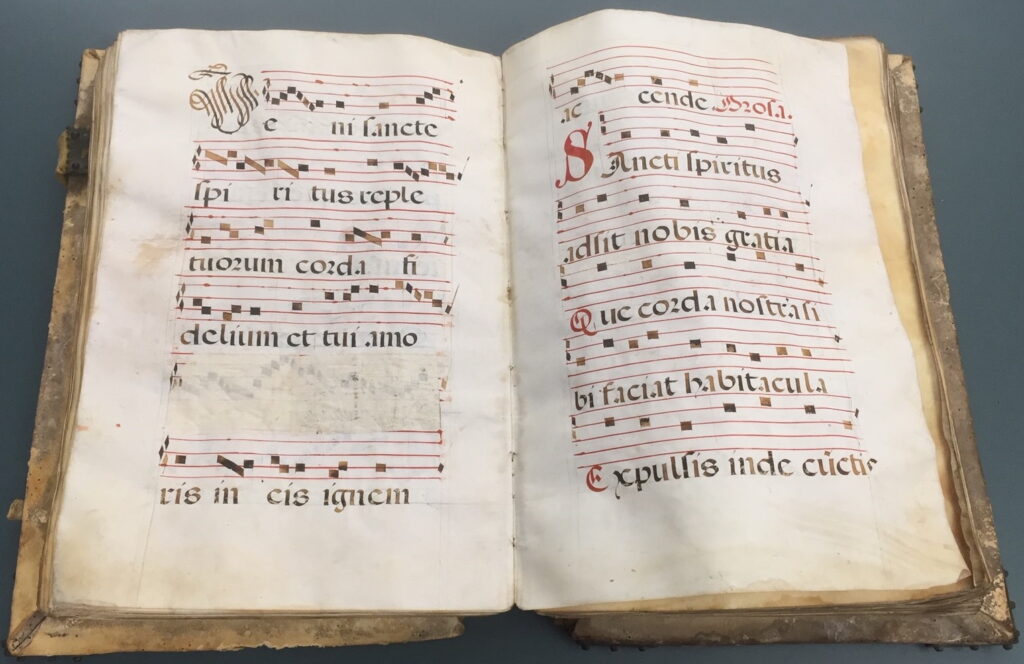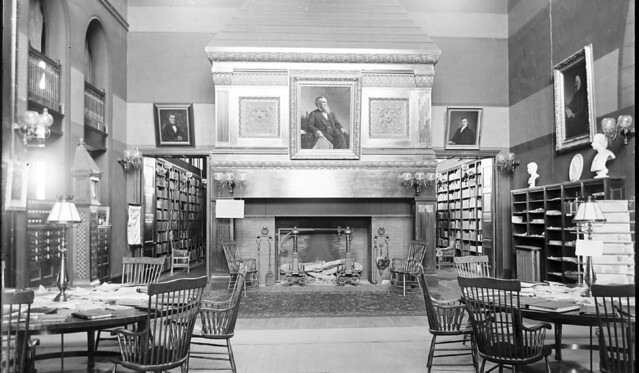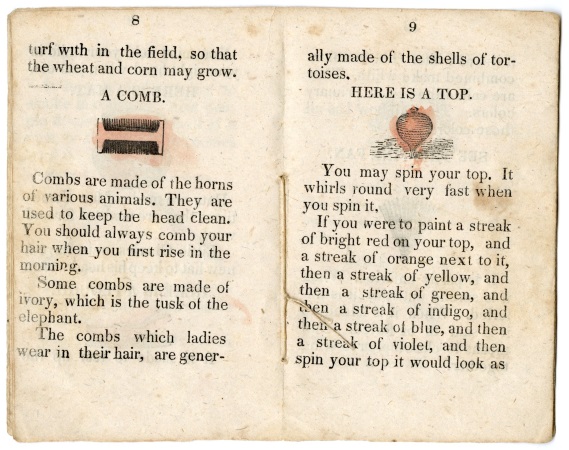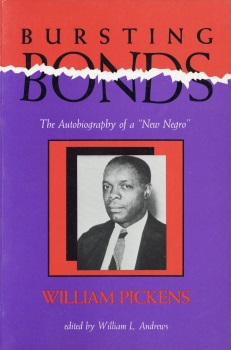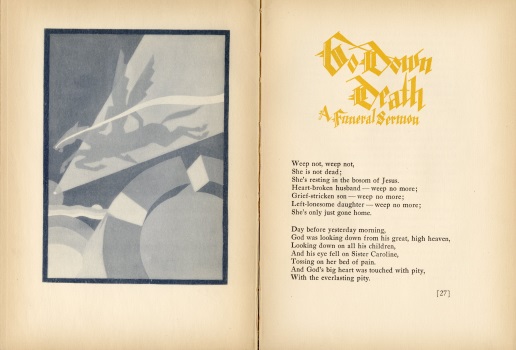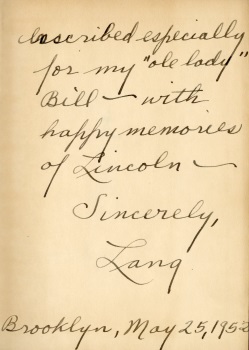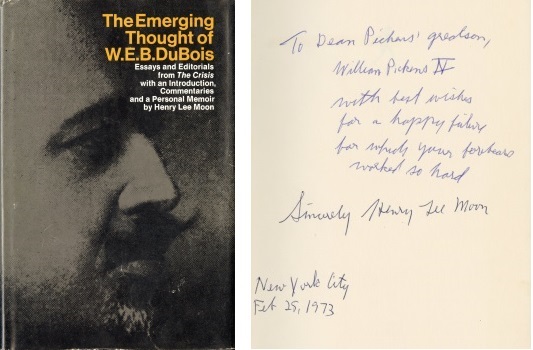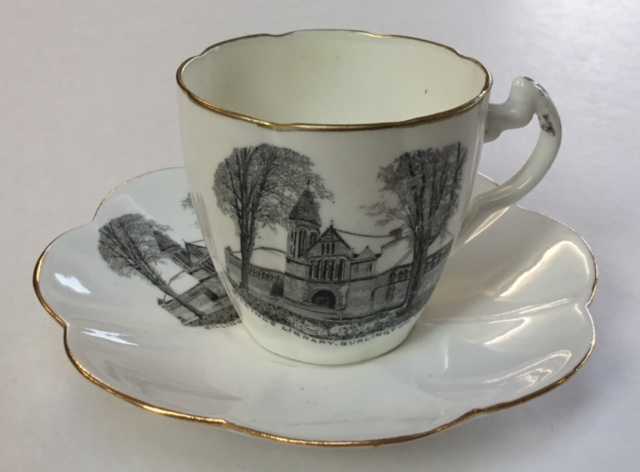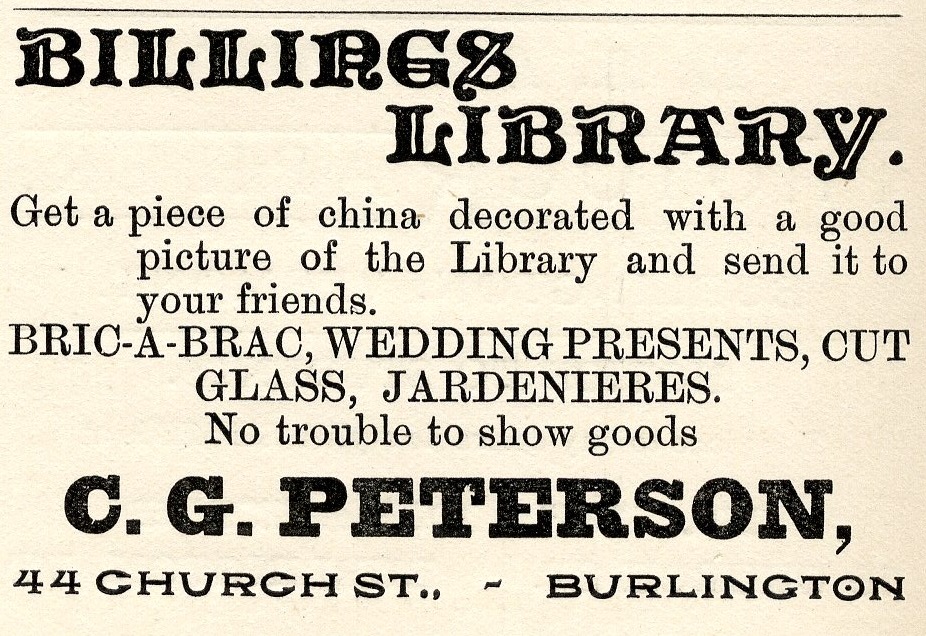In February, we mounted a new exhibit in our small gallery, “Work of Art: Dancing Together in Vermont.” The exhibit examines the process involved in creating diverse dance communities, from groups of girls and boys in clever costumes tap dancing across school stages to performers exploring familiar landscapes in new ways. Using photographs, documents and artifacts, the exhibit looks at two long-running Burlington dance studios led by Polly Nulty and Lorette Sousie, the stage performances and “eco-choreography” of l. tarin chaplin, and two site-specific projects from Cradle to Grave Arts under the artistic direction of Hannah Dennison. Each provided opportunities for community members of all ages and skill levels to work together to learn and to stage performances that delighted and challenged participants and audiences.
“Work of Art” was created as one component of a semester-long focus on dance. Working with Paul Besaw and Julian Barnett in the Department of Theatre and Dance, we scheduled three programs. Although we had to cancel the April events, Barnett’s presentation in early March, “Personal Poetics, From Rupture to Transformation,” drew a wonderful crowd of students and community members to the Marsh Room in Billings.
While our doors are closed, we are joining many museums and libraries who are bringing exhibits and collections online. We fortunately had digital copies of the images used in the Burlington dance studio section of the exhibit, so here we present “Polly Nulty: A Strong and Impressive Style” and “Lorette Sousie: Developing the Love of Dance.”
Polly Nulty: “A Strong and Impressive Style”
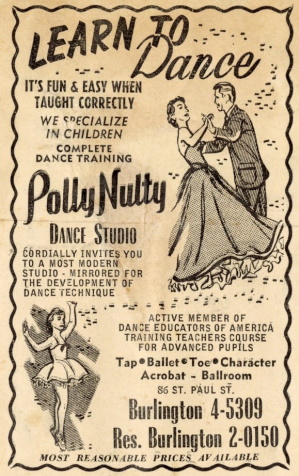 Polly Nulty (1923-1992) owned and directed her dance studio for 30 years, providing inspiration and guidance to a generation of Burlington children. Nulty started teaching neighborhood kids for free in her home in 1947, when she could spare the time from her responsibilities as a homemaker, wife, and mother. Enrollment soon increased to about 60 students and she launched a business, with classes at Burlington’s Heineberg Club. Outreach to surrounding towns included Stowe, Morrisville, Waterbury, Richmond, Essex Junction, and more.
Polly Nulty (1923-1992) owned and directed her dance studio for 30 years, providing inspiration and guidance to a generation of Burlington children. Nulty started teaching neighborhood kids for free in her home in 1947, when she could spare the time from her responsibilities as a homemaker, wife, and mother. Enrollment soon increased to about 60 students and she launched a business, with classes at Burlington’s Heineberg Club. Outreach to surrounding towns included Stowe, Morrisville, Waterbury, Richmond, Essex Junction, and more.
Over the course of her dance career, Nulty studied with the Jack Stanley School of Dancing in New York and, to keep her skills sharp, attended dance classes at the University of Vermont and at conventions in Boston and New York. By 1957, she had become a member of Dance Educators of America, after a difficult four-hour examination that included assessment of her choreography, teaching, and knowledge of music.
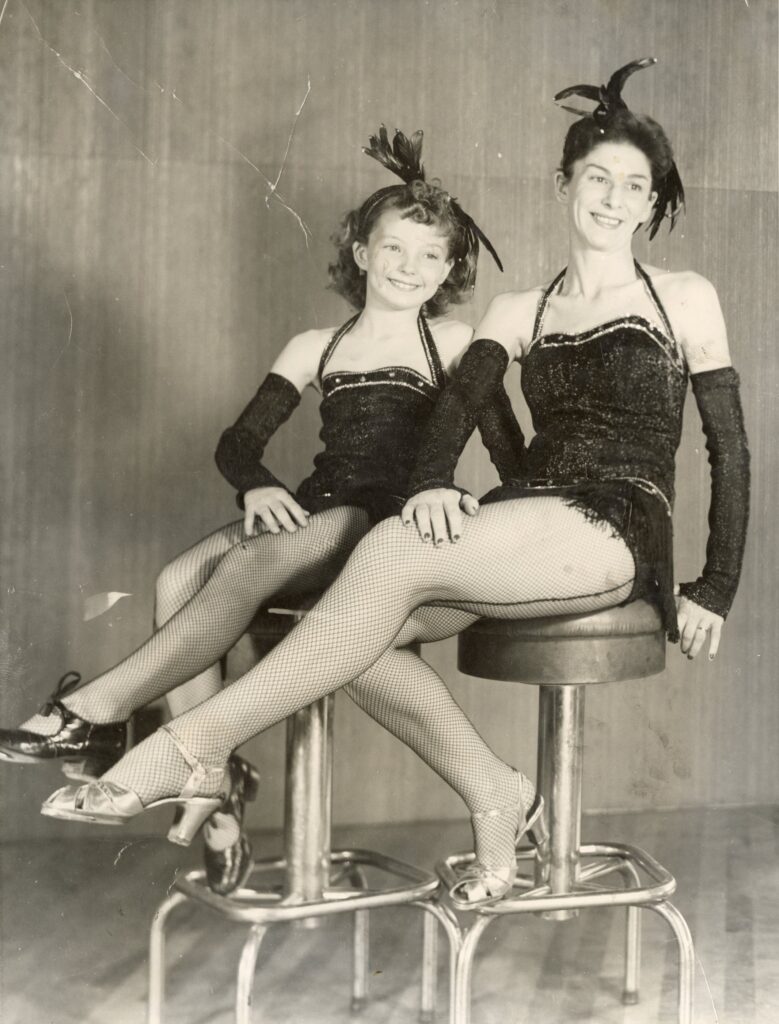
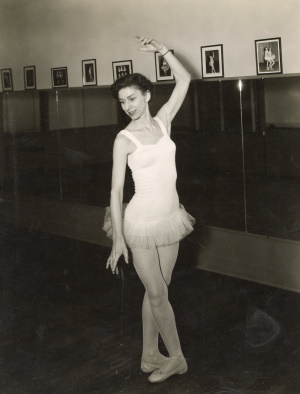
Left: Nulty with daughter and student Mary in matching costumes. Right: Nulty shows the proper technique in her studio on St. Paul Street.
Enrollments rose to 250 to 300 students. By the mid-1950s, Nulty had established a custom studio space at 86 St. Paul Street, complete with a waiting area, barre, and mirrored wall. Eventually, the business came full circle with a studio in her new home on Pearl Street.
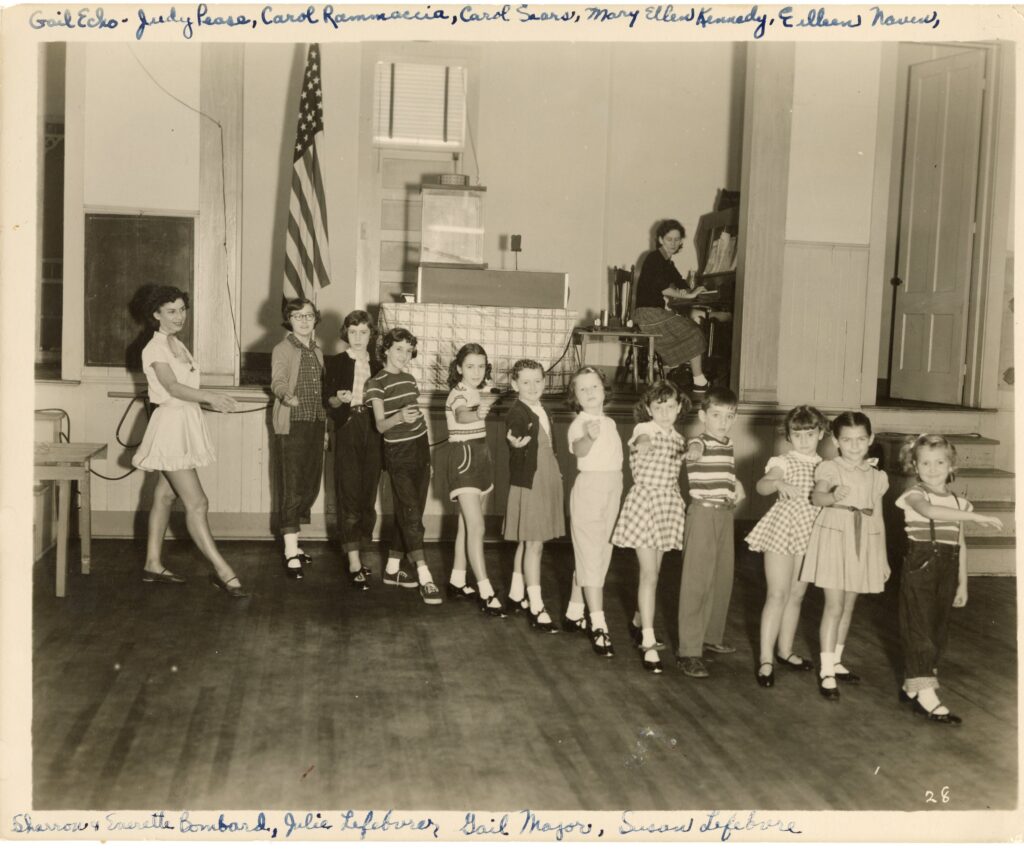 Nulty (left) guides students into the proper posture and formation during class.
Nulty (left) guides students into the proper posture and formation during class.
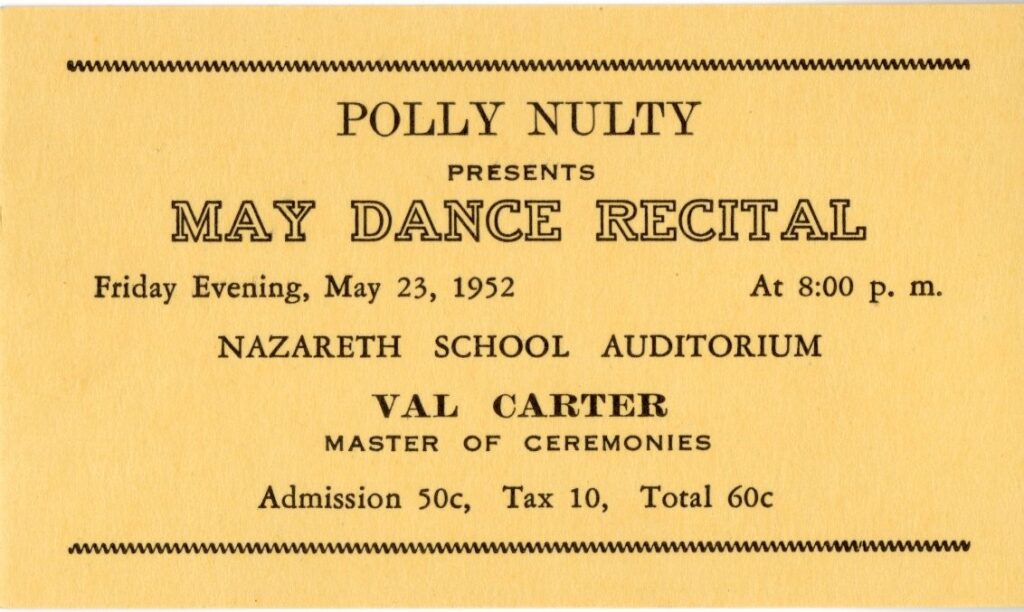 Months of dedication and training culminated each year in a grand recital, bringing the whole studio together to entertain and impress an audience full of family and friends. The combination of bold costumes, bright lights, music, and excitement all around made for strong memories. The picture of the 1952 recital below includes a glimpse of the larger studio community making up the capacity audience at the Nazareth School, later St. Joseph’s. Note the standing ovation in progress from the balcony – a fun night and a happy memory for the admission price of just 60¢.
Months of dedication and training culminated each year in a grand recital, bringing the whole studio together to entertain and impress an audience full of family and friends. The combination of bold costumes, bright lights, music, and excitement all around made for strong memories. The picture of the 1952 recital below includes a glimpse of the larger studio community making up the capacity audience at the Nazareth School, later St. Joseph’s. Note the standing ovation in progress from the balcony – a fun night and a happy memory for the admission price of just 60¢.
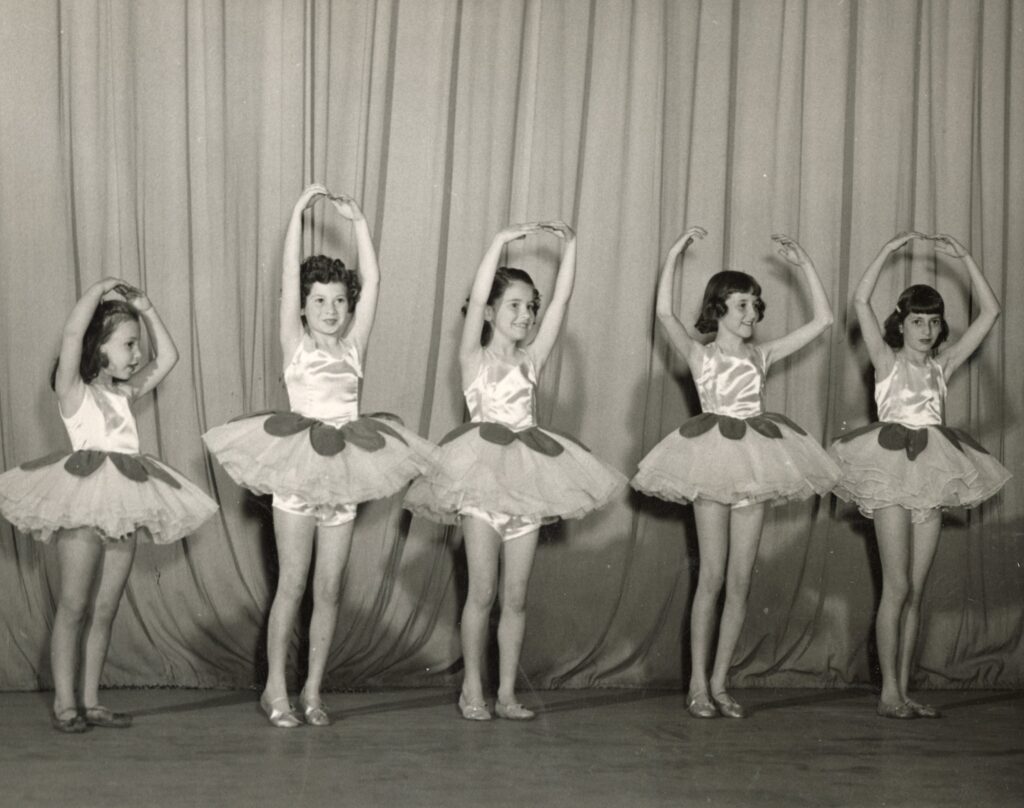 Students perform the Narcissus dance in the 1952 recital.
Students perform the Narcissus dance in the 1952 recital.
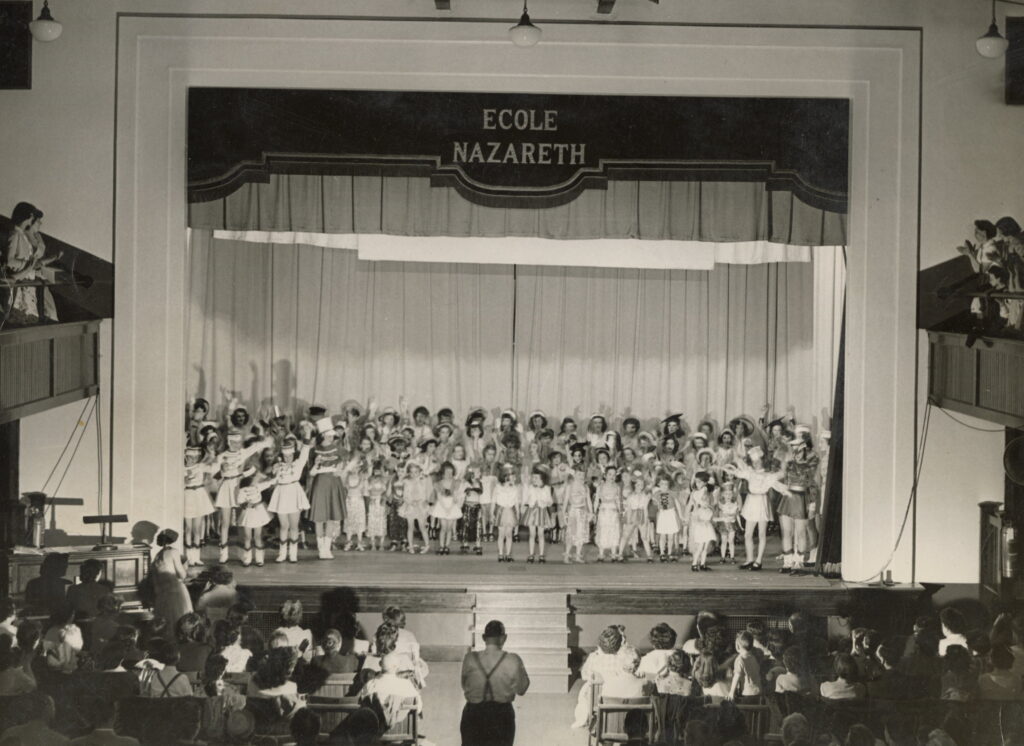 Family and friends stand to applaud the dancers at the conclusion of the 1952 recital.
Family and friends stand to applaud the dancers at the conclusion of the 1952 recital.
Modeled after the famous Radio City Rockettes, Nulty founded The Pollyettes dance chorus and precision drill team about 1954. Comprised entirely of high school students, the Pollyettes maintained an impressive schedule of public performances for a variety of fraternal, religious, and benevolent organizations, even traveling to appear on local television in Schenectady and Plattsburg, New York in 1955.
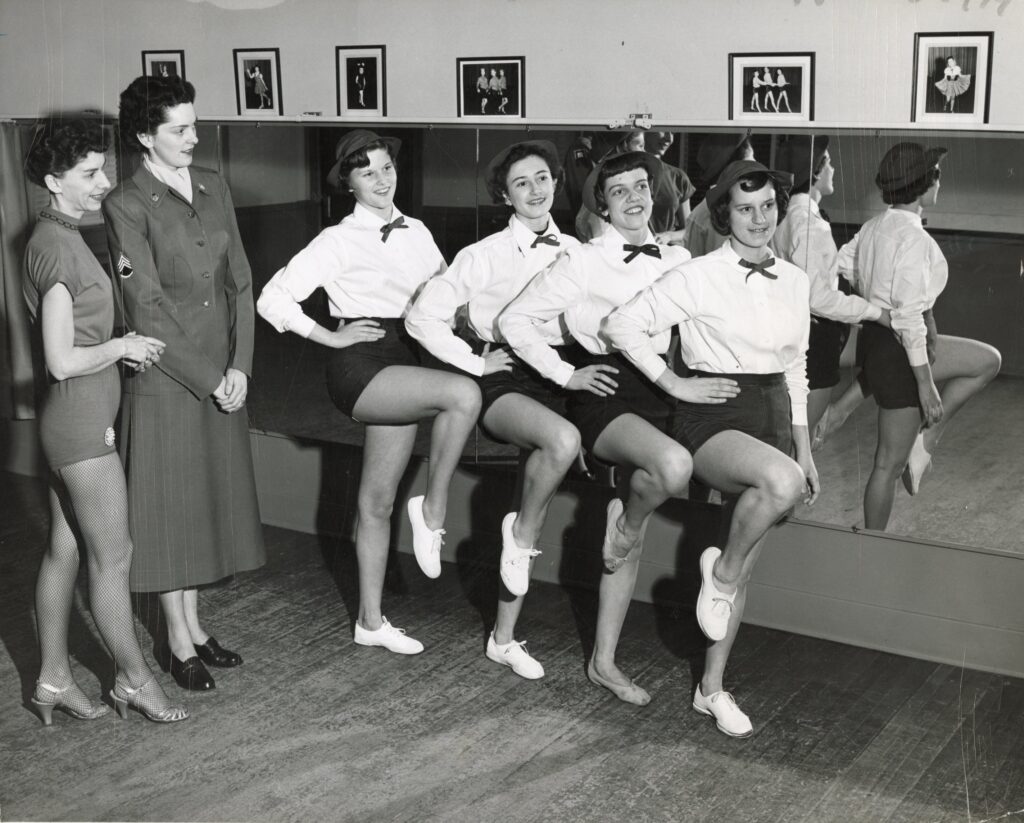 While the team’s namesake and dance instructor was Polly Nulty, their drill instructor was Sergeant Mina Yeager (second from left in photo above), a recruiting officer in the Women’s Army Corps (WACs). Yeager provided drill instruction without charge in a style similar to the basic training required of WAC recruits.
While the team’s namesake and dance instructor was Polly Nulty, their drill instructor was Sergeant Mina Yeager (second from left in photo above), a recruiting officer in the Women’s Army Corps (WACs). Yeager provided drill instruction without charge in a style similar to the basic training required of WAC recruits.
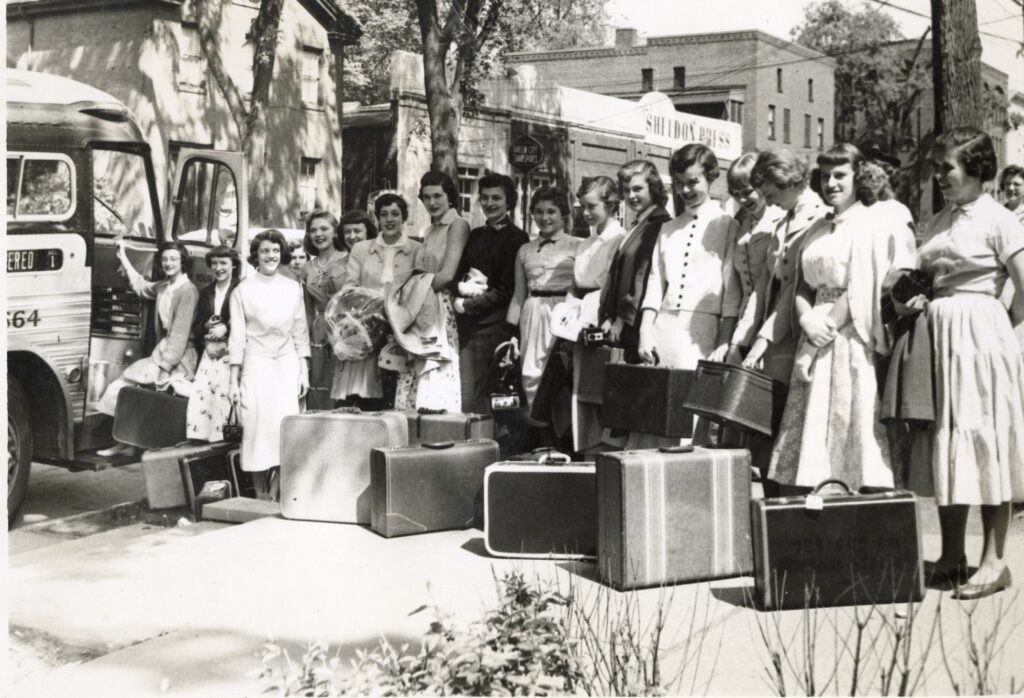 Pollyettes on the move. The troupe heads to Schenectady, where they will appear on the “Home Fare” television show. The Burlington-Lake Champlain Chamber of Commerce supported their round-trip transportation in a chartered bus. A sign on the bus read “From the shores of Lake Champlain, Vermont’s Own Pollyettes.”
Pollyettes on the move. The troupe heads to Schenectady, where they will appear on the “Home Fare” television show. The Burlington-Lake Champlain Chamber of Commerce supported their round-trip transportation in a chartered bus. A sign on the bus read “From the shores of Lake Champlain, Vermont’s Own Pollyettes.”
Nulty retired in 1977. Former pupil, teacher, Pollyette, and daughter-in-law Angie Olio Nulty (1952-2018) continued the legacy by running her own studio for 25 years. There, the third generation of Nultys became dance students alongside many other Burlington children.
Lorette Sousie: Developing the Love of Dance
Lorette Sousie, born in Winooski, Vermont in 1924, began teaching dance at 18. She operated the Sousie School of Dance in Burlington for 35 years. From 1949 to 1984, Sousie offered instruction at venues around the city. Over the years, she taught tap, ballet, jazz and baton with the help of daughters Donna and Karen. In a 2008 Burlington Free Press article that featured Sousie, the writer observed,“The principles of respect and consideration were incorporated in the way she handled her students. No matter their level of talent, she helped them discover a way to shine.”
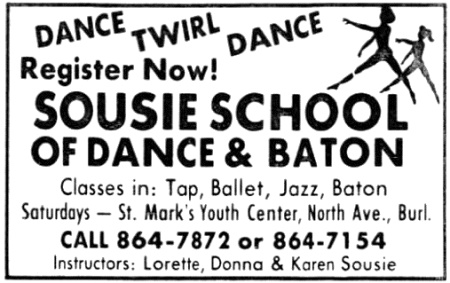 When Sousie died in 2018, her obituary noted that she “helped develop the love of dance in many children. She was very proud of her students and took pleasure in presenting them in recitals, at nursing homes, minstrel and talent shows, and many other venues.”
When Sousie died in 2018, her obituary noted that she “helped develop the love of dance in many children. She was very proud of her students and took pleasure in presenting them in recitals, at nursing homes, minstrel and talent shows, and many other venues.”
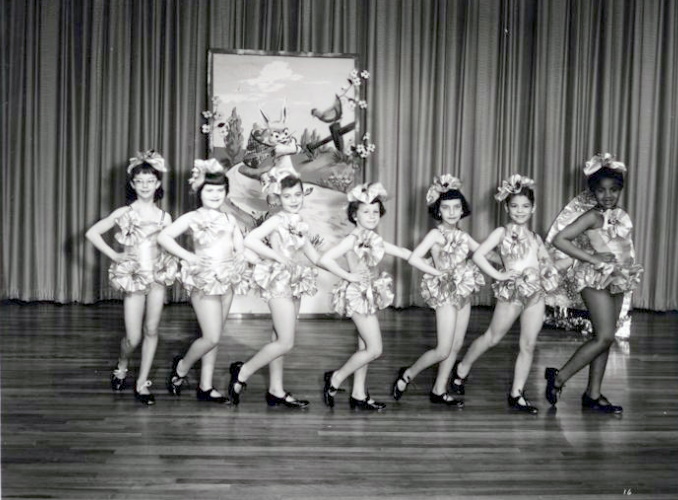 Tap dancers on stage at the Lyman C. Hunt School in Burlington, Vermont.
Tap dancers on stage at the Lyman C. Hunt School in Burlington, Vermont.
L. L. McAllister photographed Lorette Sousie’s students from 1955-1961, when she held classes at 138 North Winooski and then in a home studio at 115 North Avenue. The posed photographs capture the creativity of Sousie’s themes and costumes as well as the students’ enthusiasm. McAllister took photos in the studio and at performance sites like the Lyman C. Hunt Middle School, where Sousie presented annual recitals. As part of the L. L. McAllister Collection, the photos were originally labeled “Dance Recitals — Unidentified.” In 2014, when the library digitized the massive collection of prints, a member of the project team met with Lorette Sousie to identify dancers, studio locations and dates.
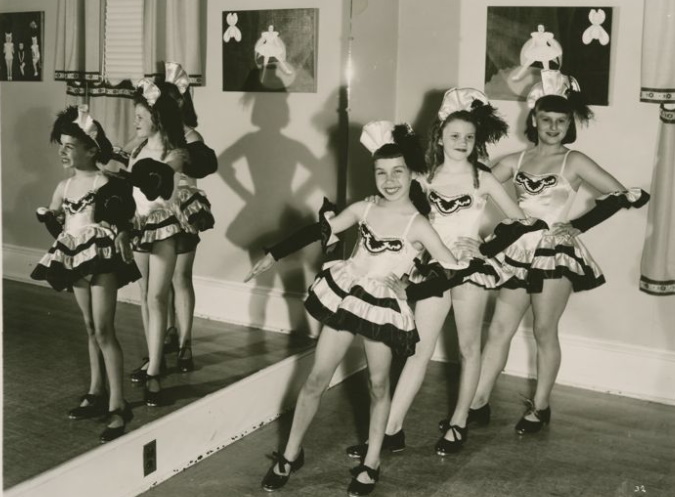 Daughter Donna Sousie smiles at the front of the group next to the mirror.
Daughter Donna Sousie smiles at the front of the group next to the mirror.
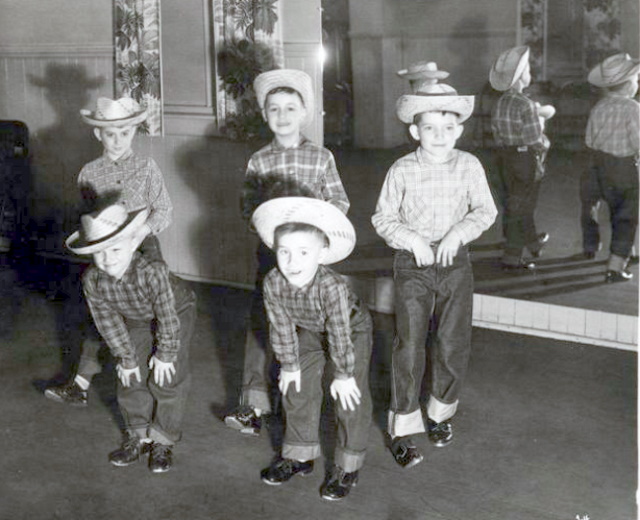 Son Allen Sousie stands in the middle of the back row of young cowboys.
Son Allen Sousie stands in the middle of the back row of young cowboys.
Notes
- The Polly Nulty Papers are the source for much of the information and the images used here. Sousie School of Dance images are from the L. L. McAllister photograph collection, which contains many photos of Sousie and Nulty dancers.
- To learn more about resources available in the Silver Special Collections Library, please consult the Vermont Performing Arts research guide.
- The team of Hannah Johnson, Erin Doyle and Prudence Doherty curated the Work of Art exhibit.
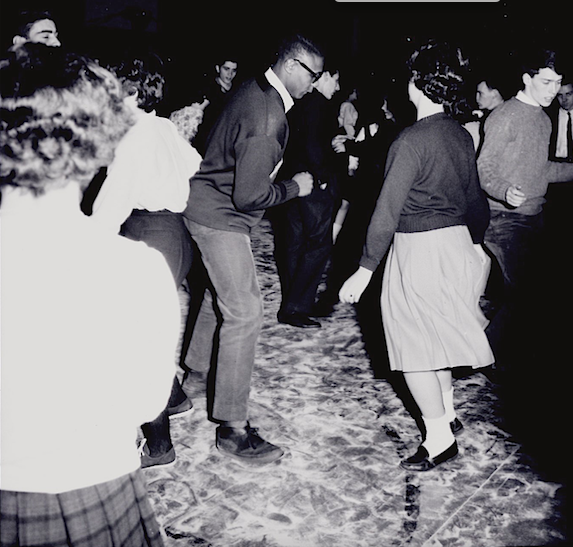
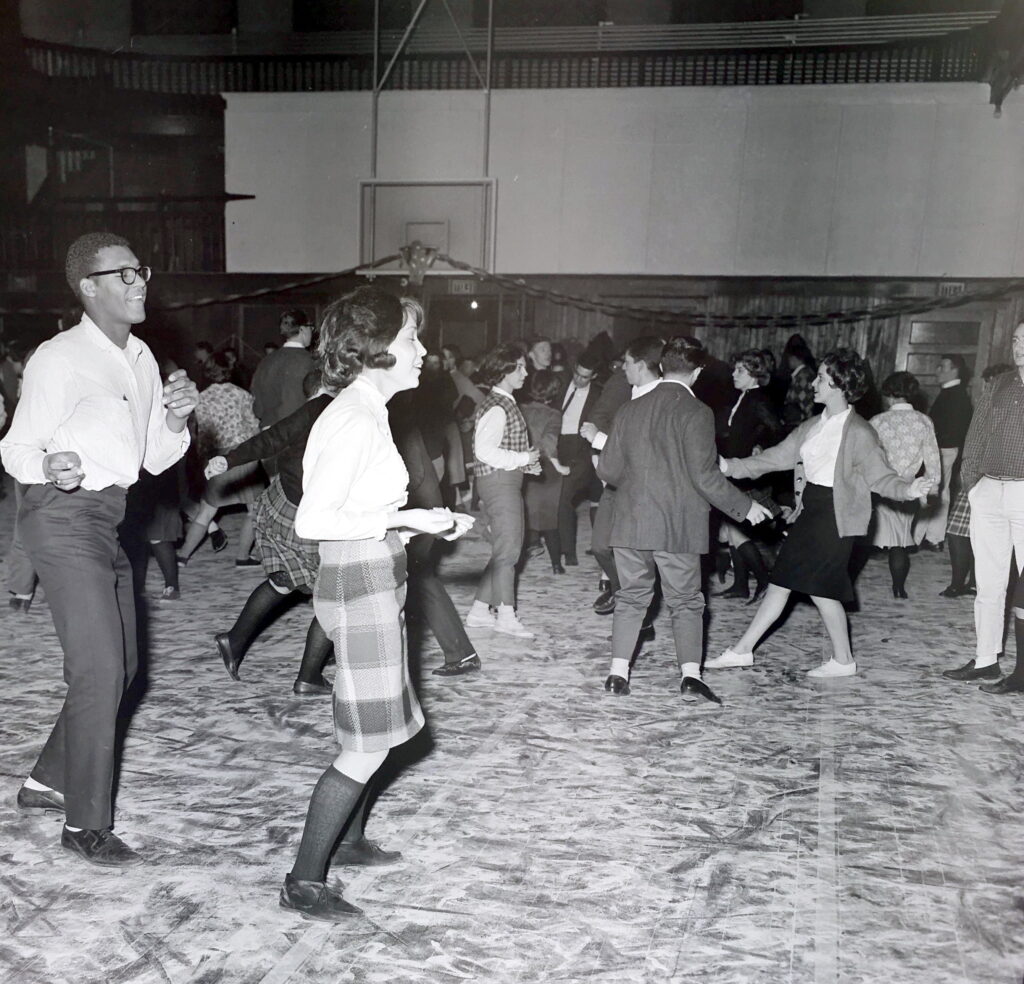
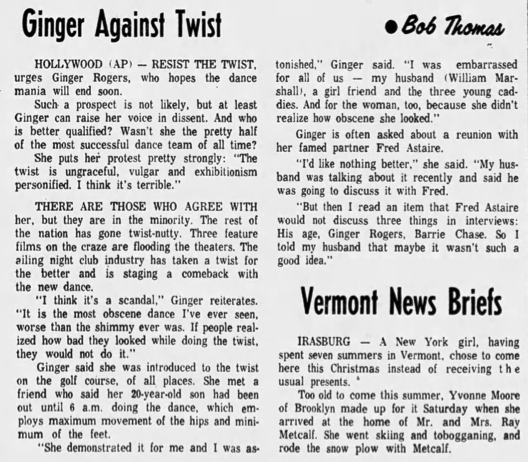 There was a clear generational divide, with youngsters in favor of this newest fad and their parents full of concern (Rutland Daily Herald, January 25, 1962).
There was a clear generational divide, with youngsters in favor of this newest fad and their parents full of concern (Rutland Daily Herald, January 25, 1962).![A letter to the editor by "High School Student" that concludes "I will stand my ground in regard to this question that all parents ask today [should the twist be censored?]. 'The Twist' is 'OUR DANCE'. We want it, and we don't want everyone condemning it! Let us enjoy 'The Twist' as our parents enjoyed the Charleston."](http://blog.uvm.edu/uvmsc-specialcollections/files/2020/04/Letter_to_Editor_2.png) Still, a few schools in Vermont banned the dance for moral or religious reasons and in quite strong terms. The first was imposed by Marian High School (Brattleboro Reformer, January 23, 1962). St. Anne’s Academy of Swanton took action soon after (Brattleboro Reformer, January 30, 1962).
Still, a few schools in Vermont banned the dance for moral or religious reasons and in quite strong terms. The first was imposed by Marian High School (Brattleboro Reformer, January 23, 1962). St. Anne’s Academy of Swanton took action soon after (Brattleboro Reformer, January 30, 1962).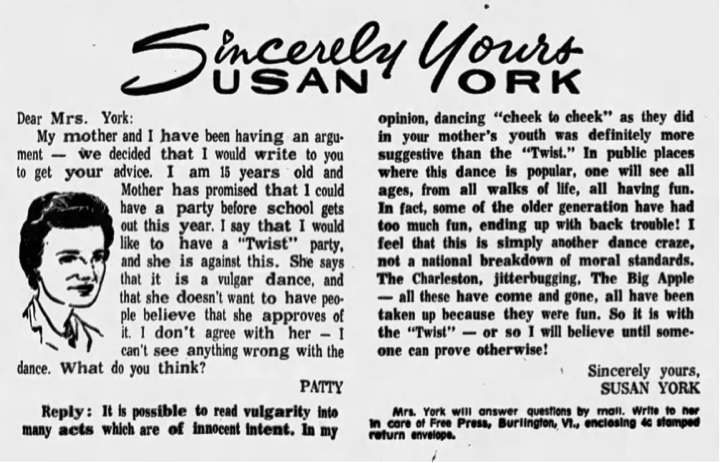 The twist was such a cultural phenomenon that it didn’t take long for twisting to be referenced in the funny papers, like this “Archie” comic that also seems to predict iPods (Burlington Free Press, August 27, 1962).
The twist was such a cultural phenomenon that it didn’t take long for twisting to be referenced in the funny papers, like this “Archie” comic that also seems to predict iPods (Burlington Free Press, August 27, 1962).
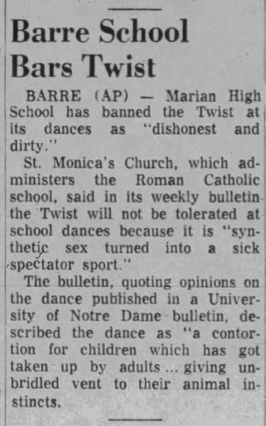
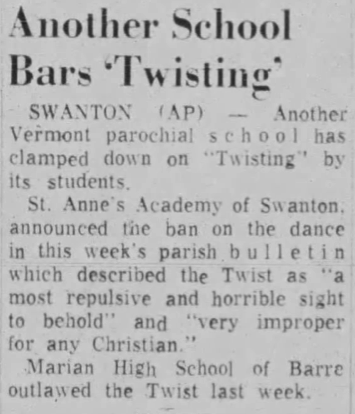
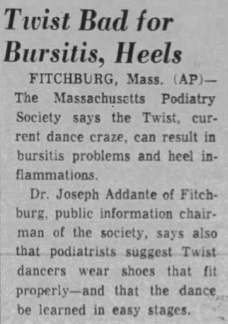
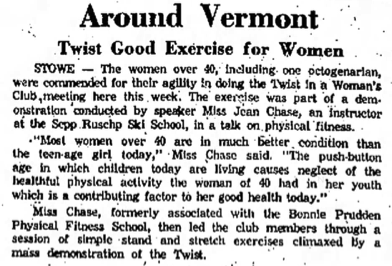











 Tap dancers on stage at the Lyman C. Hunt School in Burlington, Vermont.
Tap dancers on stage at the Lyman C. Hunt School in Burlington, Vermont.
 Son Allen Sousie stands in the middle of the back row of young cowboys.
Son Allen Sousie stands in the middle of the back row of young cowboys.
